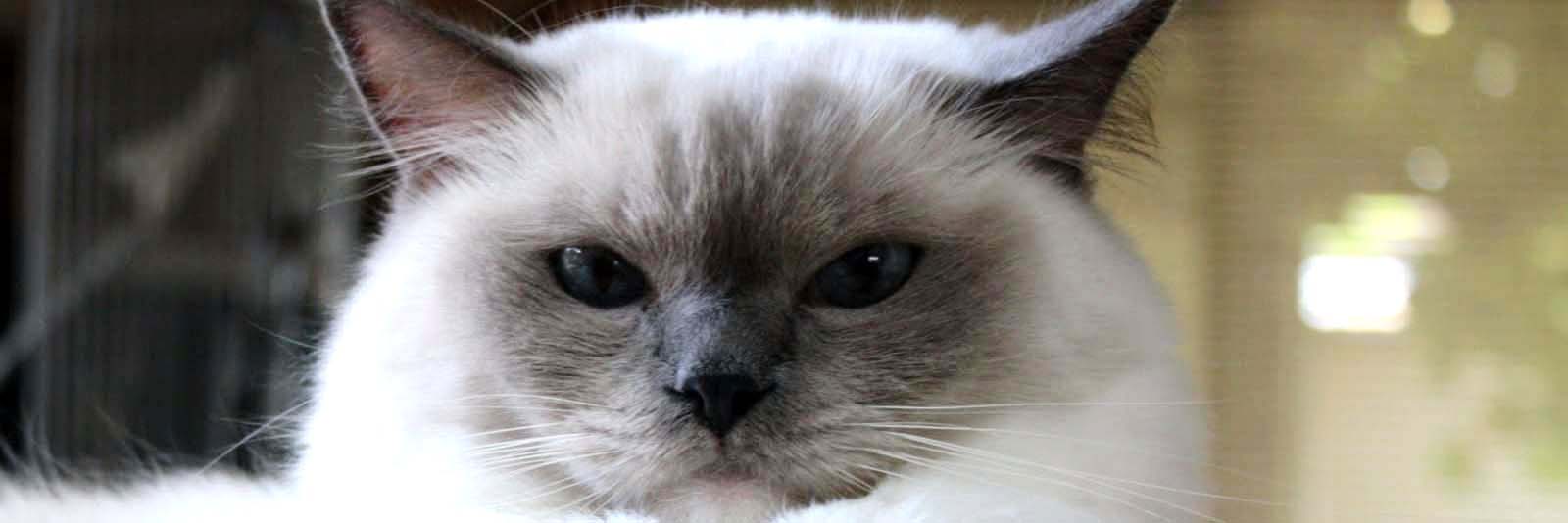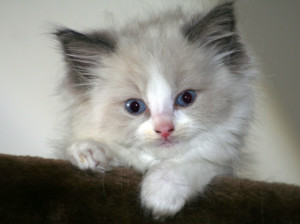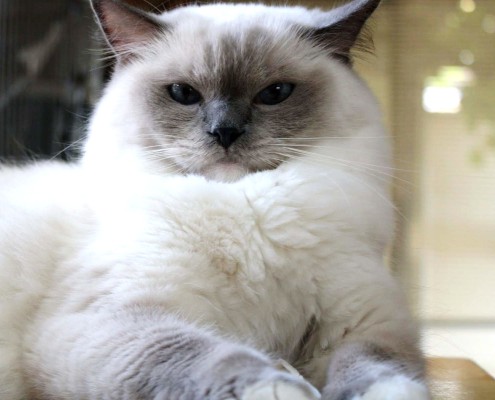Ragdoll

Meoww!!
Ragdoll was the product of the breeding of several already established breeds.
In 5 Words
- Loving
- Placid
- Easy-going
- Quiet
- Excellent
Snapshot
WEIGHT RANGE:
Male: large: >12 lbs.
Female: large: >12 lbs.
EYE COLOR:
Blue
EXPECTATIONS:
Longevity Range: 7-12 yrs.
Social/Attention Needs: Moderate
Tendency to Shed: High
COAT:
Length: Long
Characteristics: Silky
Colors: Frost, Blue, Chocolate, Seal, Red, Lilac, Bluecream, Cream
Pattern: Bicolor, Points, Mitted
Less Allergenic: No
Overall Grooming Needs: Moderate, High
CLUB RECOGNITION:
Cat Association Recognition:
CFA, ACFA , FIFe, TICA

Characteristics
Learn About the Ragdoll
The Ragdoll Historical Society (RHS) website is a project aimed at archiving the history and development of this wonderful breed of cat. The Ragdoll has a short history compared to other breeds, some of which can be traced back hundreds of years. The RAGDOLL was first recognized as a pure breed in 1965 by NCFA (now defunct).
In 1997, finally after 20+ years of breeding the Ragdolls, a large group of RFCI members motioned to vote on the acceptance of the Ragdoll in flame color and lynx in point. The majority voted for the acceptance.
In all the years of the Cat Fancy there has never been a Breed more shrouded in controversial mystery than the Ragdoll.
For nearly 40 years rumors abounded that the Ragdoll was the product of the breeding of several already established breeds. However, more recent Intensive investigations and pedigree examinations have confirmed that the Ragdolls beginnings were somewhat different. The following is taken from the book The Definitive Guide To Ragdolls by Lorna Wallace, Robin Pickering and David Pollard, published by Ragdoll World UK.
The Ragdoll is a large affectionate, semi-longhaired cat with captivating blue eyes. One of the largest breeds in the cat fancy, the Ragdoll gets along well with children and other pets, including dogs, often living up to its name as it gets carried around the house in a child’s arms. These sturdy cats have no extreme features and blend easily in to the busy modern household.
Originally the breed was only bred in the colours of seal, blue, chocolate and lilac. However, in Australia today we now have six very strikingly beautiful colours to choose from which occur in all of the patterns currently available. Colours currently available in Australia include Seal, Blue, Lilac, Chocolate, Flame/ Red and Cream.
The docile and floppy nature of the Ragdoll is a characteristic thought to be passed down from the Persian and Birman breed. Opinions vary as to whether this trait might be the result of genetic mutation.
Ragdolls have unique personalities. They are loving, placid and easy-going, quiet cats. Ragdolls love being with people. This makes them excellent companions for children and adults alike!
One study utilizing Swedish insurance data showed that of the common cat breeds, the Ragdoll and Siamese have the lowest survival rate, with 63% living to 10 years or more for the Ragdoll and 68% for the Siamese, although the same study concluded that the overall age standardized total mortality rate for the Siamese and Persian groups was higher than for other breed groups.
Allowing your Ragdoll to roam outdoors alone is strongly discouraged. It is safest to keep your kitten indoors. The Ragdoll tends to be a very social breed, so make sure you have ample time to spend with your feline before bringing her home. You’ll want to continue the food regime that the breeder recommends or that your vet recommends. If you are switching their food, you have to do it slowly.






